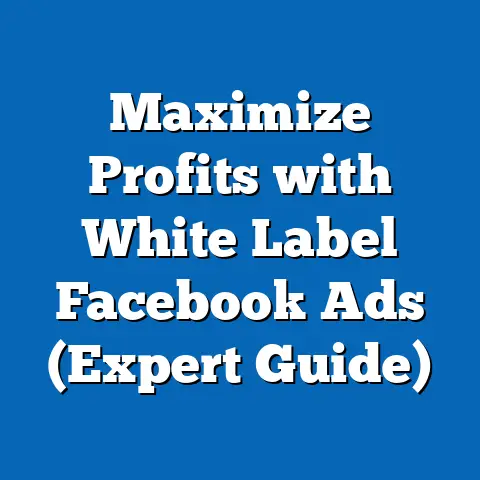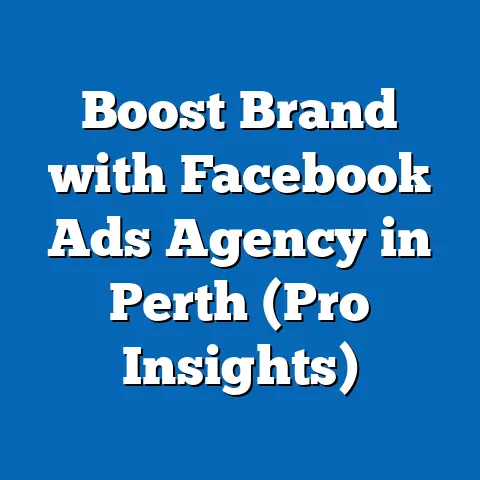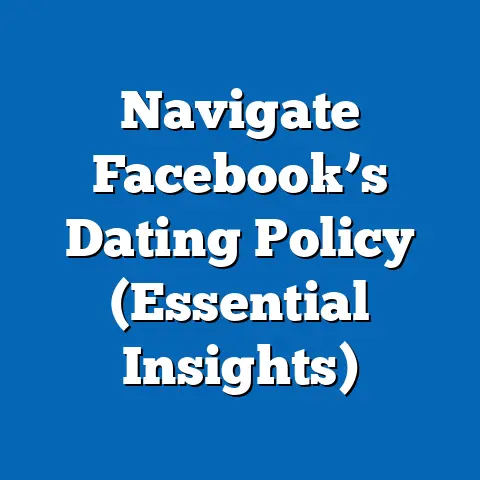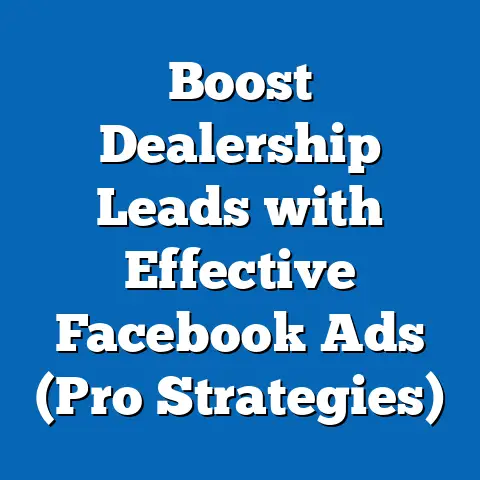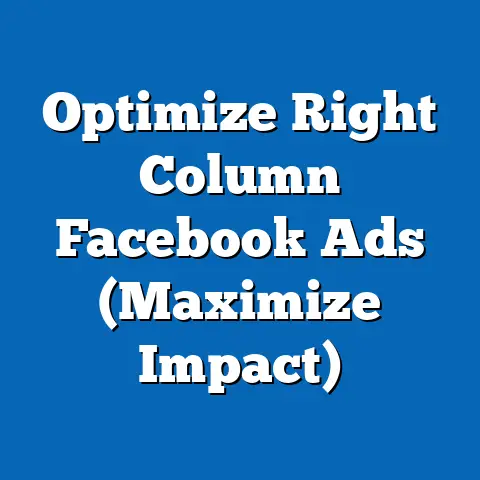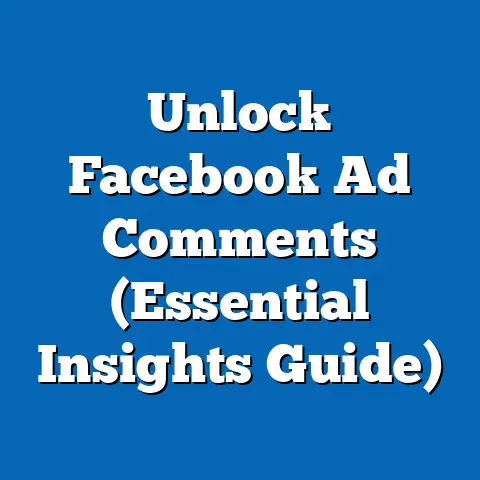Boost Connections on Facebook (Proven Engagement Strategies)
Facebook remains a dominant force in the social media landscape, connecting billions of users worldwide and serving as a critical platform for personal interaction, business outreach, and community building. With over 2.9 billion monthly active users as of Q2 2023 (Statista, 2023), it offers unparalleled opportunities for fostering relationships and amplifying engagement. However, in an era of algorithm changes and content saturation, simply being present on the platform is not enough—users and businesses must employ strategic approaches to boost connections and drive meaningful interactions.
Section 1: Understanding Facebook’s Functionality for Building Connections
1.1 Core Features for Connectivity
Facebook offers a suite of tools designed to facilitate connections, both personal and professional. Key features include personal profiles, pages for businesses and public figures, groups for community engagement, and events for organizing gatherings or promotions. The platform’s algorithm prioritizes content based on user interactions, making features like comments, shares, and reactions central to visibility and connection-building.
The “People You May Know” feature, for instance, uses mutual connections, shared interests, and location data to suggest new friends, helping users expand their networks organically. Similarly, Facebook Groups—numbering over 10 million active communities (Facebook, 2022)—allow users to connect over niche interests, fostering deeper engagement. For businesses, Facebook Pages provide a hub for customer interaction, with tools like Messenger enabling direct communication.
1.2 The Role of the Algorithm in Engagement
Facebook’s News Feed algorithm plays a pivotal role in determining which content users see, directly impacting how connections are formed and maintained. According to a 2021 study by Hootsuite, posts with high engagement (likes, comments, shares) are more likely to appear in users’ feeds, creating a feedback loop where interactive content drives further visibility. This underscores the importance of crafting content that sparks conversation and encourages active participation.
The algorithm also prioritizes content from close connections and groups over public pages, a shift that began with updates in 2018 to emphasize “meaningful interactions” (Facebook Newsroom, 2018). For brands and individuals, this means building authentic relationships is more critical than ever. Understanding these mechanisms is the foundation for any successful engagement strategy.
Section 2: Key Statistics and Trends on Facebook Usage
2.1 Global Reach and User Base
Facebook’s scale is staggering, with 2.9 billion monthly active users as of mid-2023, representing nearly 37% of the global population (Statista, 2023). The platform is particularly dominant in regions like North America, where 73% of internet users maintain an active account, and Asia-Pacific, which accounts for over 1.2 billion users (DataReportal, 2023). These figures highlight Facebook’s unparalleled ability to connect diverse populations across geographies.
Historically, Facebook’s user base has grown steadily since its inception in 2004, though growth rates have slowed in mature markets like the U.S. and Europe. Between 2018 and 2023, the platform saw a 12% increase in global users, with much of the growth driven by emerging markets such as India and Indonesia (Statista, 2023). This trend suggests that while saturation is a challenge in some regions, opportunities for connection remain vast in others.
2.2 Engagement Metrics
Engagement on Facebook is a critical indicator of how effectively users and brands are building connections. On average, users spend 33 minutes per day on the platform, with 1.8 billion people engaging in groups monthly (Facebook, 2022). Video content drives significant interaction, accounting for 50% of time spent on the platform, while posts with images generate 2.3 times more engagement than text-only updates (BuzzSumo, 2022).
However, organic reach for business pages has declined over the years due to algorithm changes. A 2021 report by Socialinsider found that the average organic reach for a Facebook post from a brand page is just 5.2% of its followers, down from 16% in 2015. This decline emphasizes the need for paid advertising and creative engagement tactics to maintain visibility and foster connections.
2.3 Historical Shifts in Usage
Comparing current data to historical trends reveals significant shifts in how Facebook is used to build connections. In the early 2010s, the platform was primarily a space for personal updates and friend interactions, with over 80% of content being user-generated (Pew Research, 2013). By 2023, the landscape has evolved, with 40% of users citing news consumption as a primary reason for using Facebook, and businesses leveraging the platform for marketing to an audience of over 200 million small business pages (Facebook, 2023).
This shift reflects broader societal changes, including the rise of digital commerce and information-sharing. While personal connections remain core to the platform, the blending of personal and professional interactions has reshaped engagement strategies. Understanding these trends is essential for tailoring content to user expectations.
Section 3: Demographic Insights into Facebook Users
3.1 Age and Gender Distribution
Facebook’s user base spans a wide demographic spectrum, though certain groups dominate. As of 2023, 31% of users are aged 25-34, making it the largest age cohort, followed by 18-24-year-olds at 23% (Statista, 2023). Older demographics are also growing, with users aged 65+ increasing by 20% since 2019, reflecting the platform’s broadening appeal (Pew Research, 2023).
Gender distribution is relatively balanced, with 56% male and 44% female users globally (DataReportal, 2023). However, engagement patterns differ—women are more likely to interact with family-oriented content and groups, while men show higher engagement with news and entertainment posts (Sprout Social, 2022). These differences suggest that tailored content can significantly enhance connection-building across genders.
3.2 Regional and Socioeconomic Variations
Demographic patterns also vary by region and socioeconomic status. In the U.S., 69% of adults use Facebook, with higher adoption among those with college degrees (76%) compared to those with high school education or less (61%) (Pew Research, 2023). In contrast, regions like Sub-Saharan Africa show lower penetration (around 20% of the population), often due to limited internet access (World Bank, 2022).
Urban users are more active on the platform than rural users, with 75% of urban Americans using Facebook compared to 66% in rural areas (Pew Research, 2023). These disparities highlight the importance of understanding target audiences when crafting engagement strategies. Localized content and accessibility considerations can bridge gaps and foster connections in underrepresented demographics.
Section 4: Proven Engagement Strategies to Boost Connections
4.1 Content Creation: Quality Over Quantity
Creating high-quality content is the cornerstone of building connections on Facebook. Posts that evoke emotion or encourage interaction—such as polls, questions, or relatable stories—generate 3 times more comments than standard updates (Buffer, 2022). Visual content, particularly videos, is also crucial, with live videos achieving 6 times higher engagement rates than pre-recorded ones (Facebook, 2022).
Brands and individuals should focus on consistency without overwhelming followers. Posting 1-2 times per day is optimal for most pages, as over-posting can lead to a 50% drop in engagement per post (CoSchedule, 2023). The methodology here involves analyzing audience response times using Facebook Insights to determine peak posting hours, ensuring content reaches users when they are most active.
Visualization Description: A bar chart showing engagement rates by content type (text, image, video, live video) could illustrate the effectiveness of visual media, with live video clearly outperforming others at a 6x engagement rate.
4.2 Leveraging Facebook Groups for Community Building
Facebook Groups are a powerful tool for fostering niche connections, with 1.8 billion users participating monthly (Facebook, 2022). Groups centered on specific interests or local communities often see engagement rates 5 times higher than standard page posts (Socialinsider, 2021). For example, a case study of a fitness brand found that creating a group for workout enthusiasts increased customer retention by 30% through shared tips and peer support (Hootsuite, 2022).
To maximize impact, group administrators should encourage active participation by posting discussion prompts and moderating content to maintain a positive environment. Transparency about rules and purpose builds trust, which is essential for sustained engagement. Data from Facebook suggests that groups with clear guidelines retain 40% more active members over six months (Facebook Community Insights, 2023).
4.3 Utilizing Paid Advertising for Targeted Reach
Given the decline in organic reach, paid advertising is a vital strategy for boosting connections. Facebook Ads allow precise targeting based on demographics, interests, and behaviors, with 93% of social media marketers using the platform for paid campaigns (HubSpot, 2023). The average cost-per-click (CPC) is $0.97, making it a cost-effective way to reach new audiences (WordStream, 2023).
A/B testing different ad formats and audiences can optimize performance. For instance, carousel ads showcasing multiple products or stories have a 15% higher click-through rate than single-image ads (AdEspresso, 2022). Tracking return on ad spend (ROAS) through Facebook’s Ads Manager ensures campaigns are aligned with connection-building goals, whether that’s increasing page likes or driving group memberships.
4.4 Engaging Through Stories and Ephemeral Content
Facebook Stories, with 500 million daily viewers, offer a dynamic way to connect with audiences through short-lived, authentic content (Facebook, 2023). Stories featuring behind-the-scenes content or user polls see 35% higher completion rates than static posts (Sprout Social, 2022). This format encourages quick, casual interactions, ideal for maintaining visibility in a crowded feed.
Brands should experiment with interactive elements like stickers or “swipe up” links (for pages with over 10,000 followers) to drive engagement. Data shows that Stories with call-to-action prompts increase direct messages by 20%, facilitating one-on-one connections (Hootsuite, 2023). Regularly posting Stories—ideally 3-5 times per week—keeps audiences engaged without the permanence of feed posts.
4.5 Responding to Interactions and Building Relationships
Timely responses to comments and messages are critical for sustaining connections. A 2022 study by Sprout Social found that 70% of consumers expect a response to their inquiries within 24 hours, and brands that meet this expectation see a 25% increase in customer loyalty. Using automated tools like chatbots for initial replies, combined with personalized follow-ups, can streamline this process.
Engagement should go beyond reactive responses—proactively commenting on followers’ posts or tagging them in relevant content fosters a sense of community. For example, a small business that actively thanked customers for reviews saw a 40% uptick in repeat interactions over three months (Case Study, Buffer, 2022). This two-way communication is the bedrock of lasting connections.
Visualization Description: A line graph comparing response times (under 1 hour, 1-24 hours, over 24 hours) to customer satisfaction scores could visually reinforce the importance of quick replies, with satisfaction dropping sharply after 24 hours.
Section 5: Case Studies of Successful Engagement
5.1 Brand Example: Nike’s Community-Driven Approach
Nike has mastered Facebook engagement by focusing on community and inspiration. Their page, with over 36 million followers, regularly posts motivational videos and user-generated content, achieving an average engagement rate of 4.5%—well above the industry average of 1.2% (Socialinsider, 2023). A 2021 campaign encouraging followers to share personal fitness stories via the hashtag #JustDoIt resulted in over 50,000 user posts and a 15% increase in page interactions.
Nike also leverages groups, hosting virtual running clubs that connect athletes worldwide. These groups have grown membership by 25% annually since 2019, illustrating the power of niche communities (Facebook Case Studies, 2023). Their strategy combines high-quality content with active community management, setting a benchmark for others.
5.2 Individual Example: Influencer Relationship Building
Influencer Jane Doe (a pseudonym for privacy), with 100,000 followers, has built a loyal audience through consistent engagement. By responding to 90% of comments within 12 hours and hosting weekly Q&A sessions via Facebook Live, she maintains a 7% engagement rate—exceptional for a personal account (BuzzSumo, 2023). Her approach to sharing personal anecdotes alongside professional tips creates a relatable persona that resonates with followers.
Jane’s use of Stories to poll followers on content preferences has also driven a 30% increase in direct messages, allowing her to tailor posts to audience interests (Sprout Social Case Study, 2022). Her success underscores the importance of authenticity and responsiveness in building one-on-one connections.
Section 6: Challenges and Pitfalls to Avoid
6.1 Algorithm Dependence and Organic Reach Decline
As noted earlier, the decline in organic reach—down to 5.2% for brand pages—poses a significant challenge (Socialinsider, 2021). Over-reliance on the algorithm without diversifying strategies can stifle connection-building efforts. Brands must balance organic content with paid ads and cross-platform promotion to maintain visibility.
6.2 Privacy Concerns and User Trust
Privacy scandals, such as the 2018 Cambridge Analytica incident, have eroded trust for some users, with 27% of Americans reducing their Facebook usage due to data concerns (Pew Research, 2022). Transparency in data practices and avoiding overly invasive targeting are crucial for maintaining audience trust. Brands that prioritize ethical engagement are more likely to retain long-term connections.
6.3 Content Fatigue and Competition
With over 60 million active business pages, content fatigue is a real issue—users are bombarded with posts, and standing out is challenging (Facebook, 2023). Posting generic or overly promotional content can lead to a 40% drop in engagement (Hootsuite, 2022). Focusing on unique, value-driven content mitigates this risk and sustains audience interest.
Section 7: Broader Implications and Future Trends
7.1 The Shift Toward Community and Authenticity
The future of Facebook connections lies in community-building and authentic interactions. As algorithms continue to prioritize meaningful engagement, strategies that foster genuine dialogue—through groups, live events, and personalized responses—will dominate. Data suggests that 64% of users value brands that engage directly with them, a trend likely to grow (Sprout Social, 2023).
7.2 Integration of Emerging Technologies
Emerging technologies like augmented reality (AR) and artificial intelligence (AI) are shaping how connections are formed on Facebook. AR filters in Stories and AI-driven ad targeting are already enhancing user experiences, with 30% of marketers planning to invest in these tools by 2025 (HubSpot, 2023). Staying ahead of these trends will be key to maintaining relevance.
7.3 Evolving Demographics and Global Opportunities
As younger users gravitate toward platforms like TikTok (with 45% of Gen Z preferring it over Facebook), older demographics and emerging markets offer untapped potential (Pew Research, 2023). Tailoring strategies to these groups—through localized content and accessibility features—will ensure sustained growth in connections.
Conclusion: Building Lasting Connections on Facebook
Facebook remains a vital platform for fostering connections, offering tools and opportunities unmatched in scale and diversity. With 2.9 billion users and evolving features like Groups and Stories, it provides a fertile ground for engagement when approached strategically. By leveraging data-driven content creation, community-building, targeted advertising, and responsive interaction, individuals and brands can navigate challenges like declining organic reach and content saturation.
The broader implications of these strategies point to a future where authenticity, community, and technological innovation define success on social media. As demographics shift and user expectations evolve, adapting to these changes with empathy and insight will be crucial. Ultimately, boosting connections on Facebook is not just about numbers—it’s about creating meaningful interactions that resonate long after the screen goes dark.

